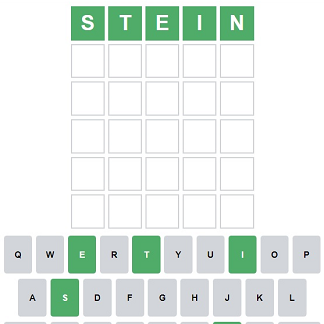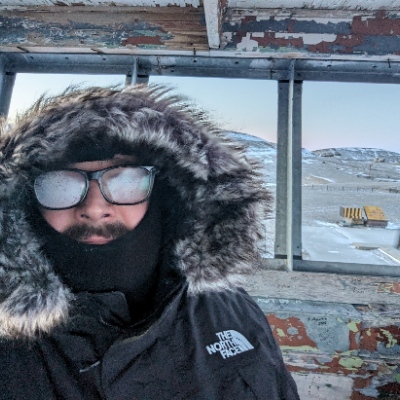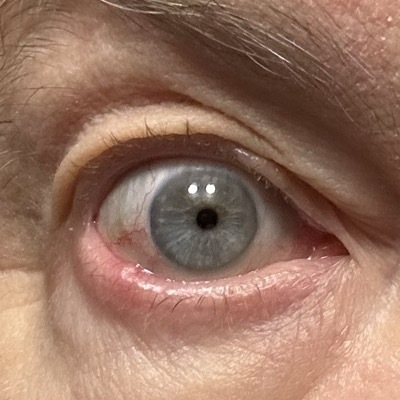Shortwave “Discone” Antenna, Former AT&T High Seas Radio Transmitter Site, Ocean Gate, NJ, 2009.
All the pixels, none of the per-minute toll charges, at https://www.flickr.com/photos/mattblaze/4141766569
#photography
Captured with a DSLR and a 24mm shifting lens.
During the 20th century, AT&T operated a shortwave “radiotelephone” service for vessels on the high seas. Ships could contact an operator, who could connect them with any landline telephone number they wished.
The North Atlantic station, callsign WOO, occupied expansive transmit and receive “antenna farms” in marshlands near the shore in central New Jersey.
Rendered obsolete by satellites, the service ceased operation on November 9, 1999.
There were three AT&T radiotelephone sites in the continental US, each with its own transmit and receive antenna farms: Ocean Gate, NJ (shown here, serving the North Atlantic), Miami (serving the Caribbean and the Gulf), and Point Reyes, CA (serving the Pacific).
All the sites have by now been razed, either for redevelopment or as nature preserves. The antennas are mostly gone now.
Ships on the high seas still occasionally make some use of shortwave radio, but its importance has greatly diminished over the last few decades. The Coast Guard still maintains a “watch” on emergency shortwave frequencies, listening for distress calls, but most transoceanic ships are now equipped with more modern, higher-bandwidth satellite communications systems.
These places are what the Internet looked like a century ago.
I should note that while the site had a number of discone antennas like this one, they were mostly there as backups in case the main antennas (including truly massive wire rhombics pointing toward various oceanic regions) or transmitter combiners failed. The old Bell System did not mess around.
Here, by the way, is what I believe was the last published frequency list and schedule for the High Seas service. (A souvenir of my last visit to the station before it went off the air.)
@mattblaze@federate.social nice short call signs in CW!
@mattblaze@federate.social
My Dad was in the Coast Guard before and after the Korean War, and a couple of his tours were “weather patrol” between Newfoundland and Bermuda. In addition to taking observations using wx balloons and radiosondes (I believe), he talked about regularly patching airplanes into the marine operator system. I was surprised to hear him talk about that — i.e., seems like aviation did not have the same communications infrastructure, so the piggyback was necessary.@mattblaze@federate.social What gorgeous typesetting.
@steveyaeger@mastodon.social especially the waves made of dingbats under each station name.
The Marine Radio Historical Society has restored the CW (Morse code) stations at Point Reyes and operates KPH KSM and KFS (as well as ham station K6KPH, mostly on Saturdays.
More info at:
#radio #AmateurRadio
Photo is of KPH during one of its operations.
@k8quinn@vivaldi.net yes, great folks!
@k8quinn @mattblaze I’ve been wanting to visit KPH. It looks like a really interesting place!
If I was a mariner today, I would want to make sure I’ve got a couple of short wave radios in case satellites become unavailable…
@mattblaze@federate.social It makes sense they’d use something more omnidirectional / lower gain, and broad spectrum for backups.
@mattblaze@federate.social Often felt that if AT&T leadership had been visionary, instead of focused on charging you $1.50/month for a long handset cord, there’d be no Internet or cable teevee.
@mattblaze@federate.social Wow! That’s really interesting, thanks! I wonder if we are going to regret being dependent on satellites for all comms in the next decade or so - the risk/threat profile seems to have changed since 1999.
@mattblaze@federate.social
just a fwiwthere are some wild antenna farms way out in West Virginia
long wave stuff
@mattblaze@federate.social
I know nothing whatsoever about any of this. Thank you for sharing, all of you. Does anyone know of a book or two that tells this story in a non-technical, popular history fashion?@mattblaze@federate.social Fantastic! Thanks for sharing that. I lived in Malvern in the UK for years and would often see the huge antennas at the Rugby Radio Station when travelling. Always amazed how large it was (~1,600 acres Wikipedia tells me now). Sad to learn now it was demolished in 2004, just a couple of years after I left the UK.
@mattblaze@federate.social I have an overwhelming urge to hook up my SDR to see what I can see with that antenna.
O_O@Beggarmidas@mastodon.social Sadly, you’ll need a time machine for this one; the site was completely cleared a few years ago. But there’s a similar former military HF antenna you can hook up to at the Titan Missile Museum south of Tucson!
@mattblaze@federate.social Ah, that’s where I was born! Bit of a drive from where I call home nowdays in Washington state.
Your name seems…VERY familiar to me. Did we know each other on twitter? I think we might have.
@mattblaze@federate.social You say goodbye, I shortwave hello.
@mattblaze@federate.social IT looks like it has three feedpoints, perhaps to direct the beam.
@profdc9@mastodon.social no, just one feedpoint. It’s an omnidirectional antenna. (Most of the cables are antenna elements or guy wires)
@mattblaze@federate.social If you look carefully, it looks like there’s three cones flaring up to the ring. So this may not be a conventional discone antenna.
@profdc9@mastodon.social No, it’s a just conventional discone antenna.
@mattblaze@federate.social Where are the radiating elements then? The radiating element is not the ring, its the guy wires, and there must be ground radials.
@profdc9@mastodon.social in this type of antenna, the mast is insulated from the ground. The feedpoint is at the base of the tower, which is the apex of a conical arrangement of wires tgat go from the base to the circumference of the ring at the top (which is itself supported by wires at the top of the mast.) Think of the small UHf/VHF discone antennas mounted on roofs, but turn them upside down. Here, the “disc” is the ground.
@mattblaze@federate.social Love the picture and explanation! Found a couple of these in Portugal a few days ago and was wondering what this type of antenna was for.
https://maps.app.goo.gl/VqovixxVmWNL159J7
37.0105050, -8.9520650

@nicoheijningen@infosec.exchange nice find! I’m not sure what that site is. I’m guessing the transmitter or receivers are in the complex across the road. My guess is Coast Guard.
@nicoheijningen@infosec.exchange Ah, apparently Portuguese Air Force (according to the signs visible on street view).
@mattblaze@federate.social ah cool! The structures across the road looked quite abandoned, but the antennas well maintained.
Could be NATO’s Broadcast and Ship to Shore (BRASS) or its sucessor BRASS Enhancement One Target Architecture (BRE1TA):

















